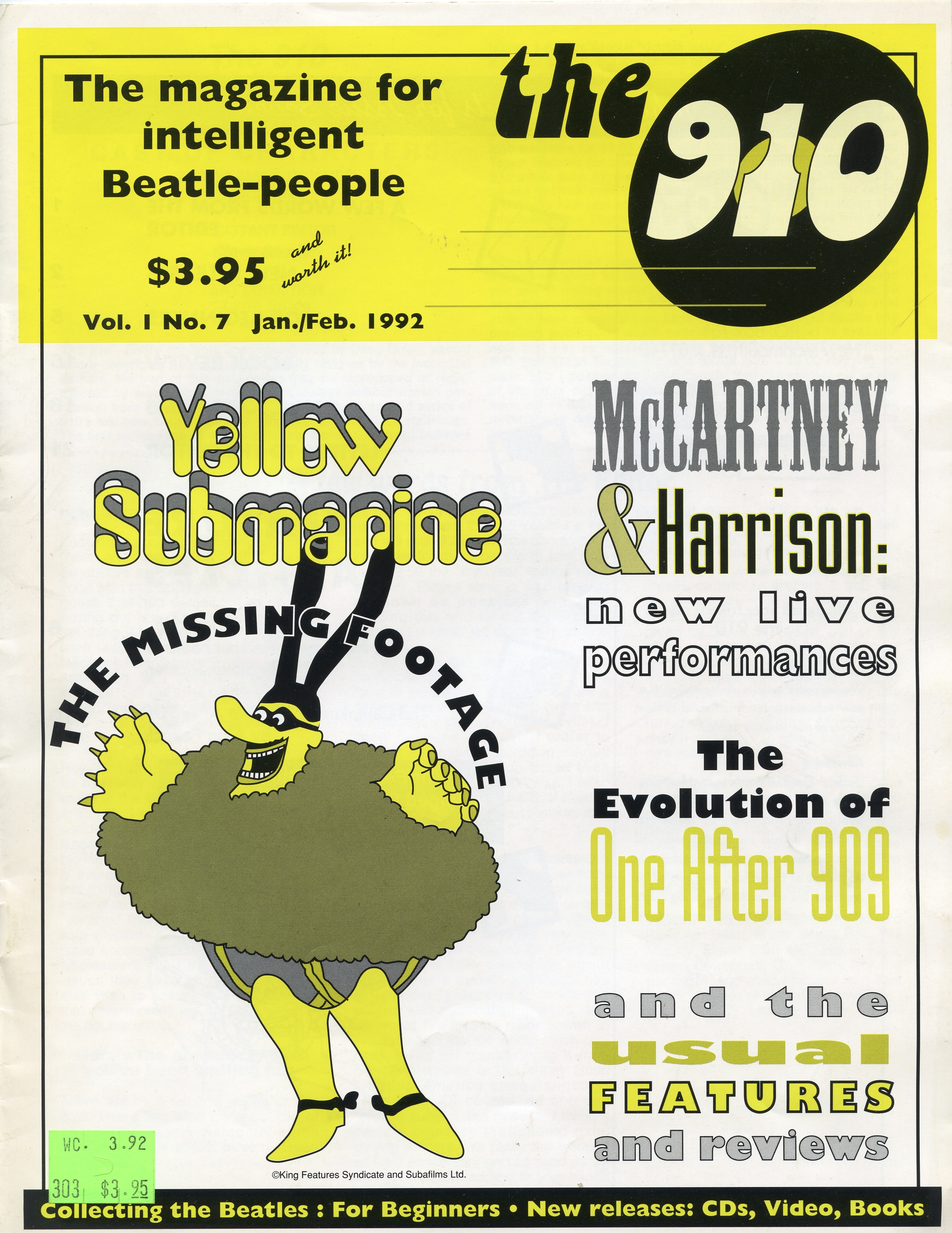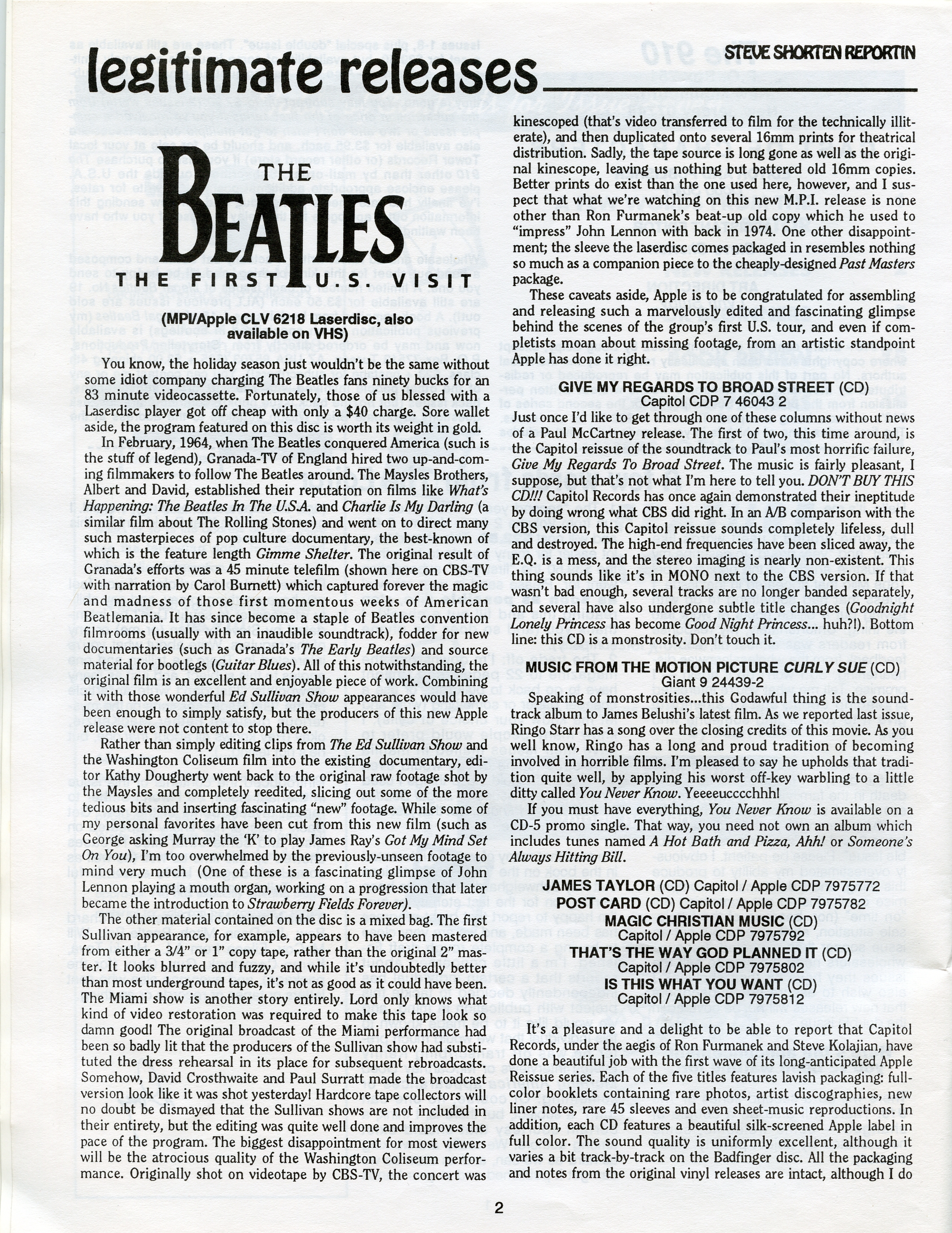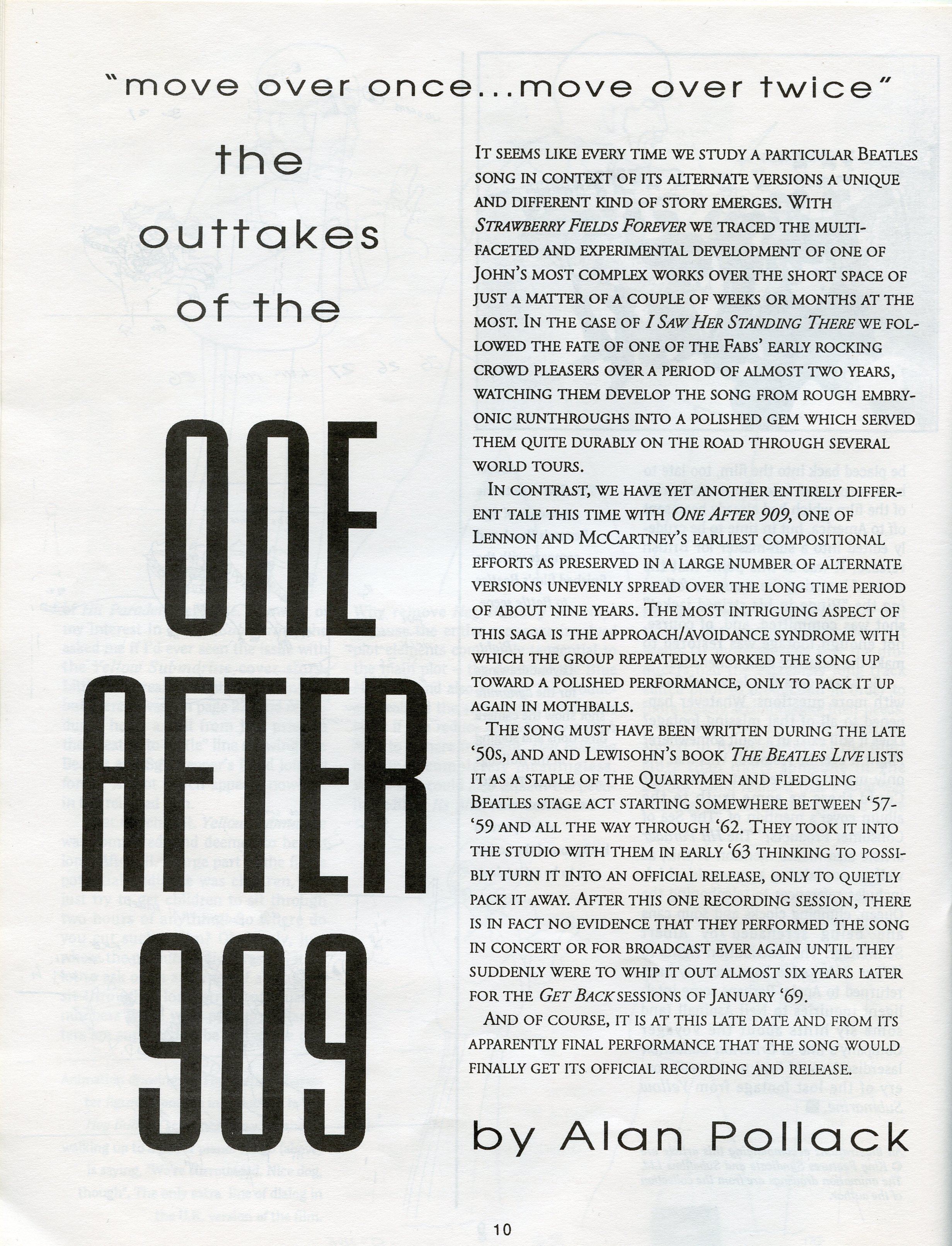oldgreycat.wordpress.com
Today’s Top 5: The Beatles! (via The 910’s January/February 1992 Issue)
The Old Grey Cat
…on music, memories & other stuff
March 25 2017
Roll over Beethoven and tell Tchaikovsky the news: The Internet changed everything.
Yeah, yeah, yeah: That ain’t exactly new. And neither’s the main focus of today’s post, bootlegs, which I’ve written about before. (See here and here.) But for any young ‘un who’s stumbled across this blog, or folks who never caught the collecting bug, understand this: There was a time in the not-so-distant past when fans clamoring for more, more, more from their favorite artists skulked through the aisles at record fairs and independent stores in search of unofficial releases – aka bootlegs, which ranged from studio scraps (alternate versions and unreleased songs) to concert recordings – and official, but non-commercial product, such as the King Biscuit Flower Hour live shows distributed on LP or CD to radio stations.
I imagine some, in fact, still do. Plenty of others, however, turn to YouTube, Facebook groups and email lists (are they still a thing?) and trade amongst themselves via whatever free bulk-download site is the flavor of the month. Back in the day, though, pursuing one’s passion meant shelling out bucks. Some fans purchased everything. The rest of us? After I bought a two-CD bootleg of a Bruce Springsteen concert that sounded like the microphone had been placed in a puddle of mud, I did my due diligence the best that I could. That meant asking store clerks to pop a CD into the in-house stereo system so I could check the sound – and, too, reading as much as I could about underground releases.
Helping to separate the wheat from the chaff: newsletters such as ICE, which delved into legitimate releases but also featured a “Going Underground” column; and such fanzines as the Beatle-obsessive 910, Neil Young-centric Broken Arrow and Springsteen-oriented Backstreets. There were plenty of other fanzines focused on other artists and specific genres, too, and many could be purchased at independent record stores – as well as Tower Records and Books.

This edition, which is dated January/February 1992, is a bonanza of insights and news. As the cover and contents page show, it delves deep into a recent crop of Beatle bootlegs; reviews legitimate fare; explores “lost” footage from the Yellow Submarine movie; and chronicles the history of the song “One After 909,” which the Fabs first recorded while still named the Quarrymen in 1960.

1) The Beatles – “Twist and Shout.” A review of the 1990 The Beatles: The First U.S. Visit documentary about the Fabs’ maiden visit to America explains that the film features footage from the Maysles brothers’ 1964 What’s Happening: The Beatles in the USA TV doc combined with the Beatles’ 1964 Ed Sullivan Show performances and Washington Coliseum concert. Although Sulpy has some quibbles with the finished product, he concludes with: “Apple is to be congratulated for assembling and releasing such a marvelously edited and fascinating glimpse behind the scenes of the group’s first U.S. tour, and even if completists moan about missing footage, from an artistic standpoint Apple has done it right.”

2) The Beatles – “Hey Bulldog.” So, apparently, the original U.S. print of Yellow Submarineomitted a scene of the animated Fabs set to this under-appreciated John Lennon song. Penned by Steve Shorten, the article explores the whys and wherefores of the cut sequence, and posits that it was initially excised from the finished film for reasons of time. “Because the entire sequence involved plot elements completely tangential to the main plot,” it could be easily chopped without anyone arching an eyebrow. It was likely added to the U.K. print, he surmises, after someone associated with the Beatles noticed that the song was missing from the movie. (The 1999 re-release of the film on DVD, for what it’s worth, features the sequence, so it’s no longer “lost.” For what that’s worth.)

3) The Beatles – “One After 909.” Although released on Let It Be in 1970, “One After 909” is actually one of the earliest of the Lennon-McCartney songwriting efforts, dating to 1957. In the article, Alan Pollack chronicles its known history, which includes the 1960 Quarrymen demos, 1962 Cavern Club rehearsals (which this clip is from), 1963 EMI recordings and numerous renditions from the 1969 “Get Back” sessions.
In a sense, the song was one of few remnants of the raison d’etre for the Let It Be/”Get Back” project, which began as a way for the Beatles (at Paul’s urging) to return to their roots. It’s why so many of the out-takes from the sessions are ramshackle run-throughs of oldies.

4) The Beatles – “She’s a Woman, Take 2.” Steve Shorten reviews Unsurpassed Masters Volume 6 and Volume 7. “Yellow Dog’s releases have proved themselves in the past to be just about the only bootleg CDs worth buying,” he says up top, before summarizing that both volumes are “worthy additions to your CD shelf.”
I have these two bootlegs, actually, purchased not because of this review but because I had (and still have, somewhere) the first five volumes in the series. But, truth be told? The series had run out of steam by this point due to a dearth of interesting out-takes. (There’s only so many alternate versions of any song one needs to hear, in other words.)

5) The Beatles – “Strawberry Fields Forever.” Nothing but Aging from Vigotone Records collects rarities featured on the Lost Lennon Tapes radio series as well as tracks bootlegged elsewhere. I never owned it, as it’s an LP (and by the early ‘90s I was only buying CDs) so don’t know if the “Strawberry Fields Forever” on it is the same as this clip I found on YouTube. But the YouTube clip reminds me of the very first Beatles bootleg I purchased – at the now-defunct City Lights Records in State College, Pa., in the mid ‘80s. Side 2 of that LP featured a string of cuts that tracked the development of “Strawberry Fields Forever” and… well, wow!




No hay comentarios:
Publicar un comentario